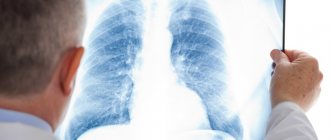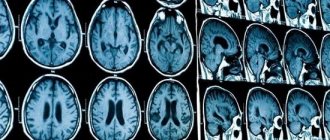According to statistics, bacterial pneumonia affects an average of about 1000 patients per 100 thousand population. This form of the disease occurs especially often in older people, over 75 years of age, or those who suffer from chronic pathologies. ALENA PARETSKAYA
Pathophysiologist,immunologist, WHO expertELENA ZARYANOVACandidate of Medical Sciences, pulmonologist of the highest category,somnologist "SM-Clinic"
Bacterial pneumonia is a common complication in patients treated in hospitals and clinics. In recent years, there has been an increase in severe forms that lead to death.
Causes of bacterial pneumonia in adults
Bacterial pneumonia is most often caused by bacteria, which are considered part of the microflora of the respiratory tract.
These microorganisms belong to the category of opportunistic pathogens. If the body is healthy, not weakened, the immune system is working properly, bacteria do not harm in any way. But during stress, operations, exacerbation of chronic diseases, severe acute respiratory viral infections, bacteria can become dangerous. There are two types of bacterial pneumonia - community-acquired and nosocomial. They vary greatly in the type of bacteria that causes inflammation.
In community-acquired pneumonia, the inflammatory process is usually provoked by pneumococcus, Haemophilus influenzae or streptococcus.
Nosocomial pneumonia is caused by particularly aggressive bacteria that are resistant to many antibiotics. These pathogens usually live in clinics - Staphylococcus aureus, Pseudomonas aeruginosa, Enterobacteriaceae and some others. Often such pneumonia occurs in people who undergo mechanical ventilation.
If patients suffer from immunodeficiency, pneumonia can be caused by Legionella, Mycoplasma, Pneumococcus, Haemophilus influenzae and Pneumocystis.
Bacteria penetrate into the lungs from the air, with the blood flow from inflammatory foci in the body or with the lymph flow, directly, with chest wounds. Risk factors that increase the likelihood of pneumonia are:
- frequent ARVI and influenza;
- bad habits (they weaken the immune system);
- constant stress and overwork;
- deficiency of vitamins and minerals;
- age over 65 - 70 years;
- living in areas with air pollution.
Pneumonia is likely in people with COPD, heart problems, diabetics, against the background of sinusitis, after operations and injuries.
How does a virus differ from a bacterium?
Thus, both viruses and bacteria are capable of infecting the body, causing infection. The key difference between them is in the reproduction mechanism. Viruses cannot reproduce in the external environment, so they need to invade the cell. Bacteria reproduce by division and can live in the external environment for a long time, waiting to enter the human body. Accordingly, the mechanisms for antibacterial and antiviral protection should also differ4.
Let's summarize briefly. The differences between a virus and a bacterium are as follows:
- Size and form of existence. A virus is the simplest life form, a bacterium is a single-celled living creature.
- Life activity. The virus exists only inside the cell and infects it, after which reproduction (cloning) occurs. The bacterium lives a full life, reproducing by division, and the body for it is only a favorable place of existence.
- Form of manifestation. Viruses tend to manifest themselves by increased body temperature, general weakness, muscle and joint pain. Bacteria manifest themselves as unhealthy discharge (purulent or as a specific plaque).
Typical viral diseases: ARVI, influenza, herpes, measles and rubella. These also include encephalitis, hepatitis, smallpox, HIV, etc.
Typical bacterial diseases: syphilis, whooping cough, cholera, tuberculosis, diphtheria, typhoid and intestinal infections, STIs.
It happens that both of them cause one disease together. Such a symbiosis requires special treatment. Examples include: sinusitis, tonsillitis, meningitis, pneumonia and other diseases5.
Symptoms of bacterial pneumonia in adults
In many ways, the symptoms of pneumonia depend on what bacteria is causing them. The more aggressive the microbe, the more severe the manifestations. The most typical manifestations of bacterial pneumonia:
- a sharp increase in temperature, which is poorly controlled by antipyretic drugs;
- severe sweating, chills;
- a cough that is wet from the first days, with copious sputum (has a greenish or rusty color);
- chest pain, especially when breathing deeply;
- severe weakness with malaise;
- headache, aches in muscles and joints;
- pale, sallow skin color;
- low blood pressure, rapid pulse;
- frequent breathing, shortness of breath, wheezing when breathing.
If pneumonia is not treated, respiratory and heart failure, toxicosis and even death can develop. It is extremely rare to have atypical bacterial pneumonia, which has very few symptoms, they are mild, but the lungs are affected to a significant extent.
What are viruses
A virus is a tiny organism that can exist and reproduce only inside living cells. In the external environment, the virus is found in microparticles of biological material, but multiplies exclusively in the cells of living beings. In other words, the virus is not active until it is inside a person2.
And he gets there like this:
- Airborne, like most respiratory infections
- When drinking dirty water, with food, or not following hygiene rules
- From mother to unborn child
- Contact – in close contact through the skin or mucous membranes
- Parenterally - bypassing the gastrointestinal tract, by injection
After entering the body, the virus first attaches to the cell, then delivers its biological genome into it, loses its envelope, and only then multiplies. After reproduction, the virus leaves the cell, and the infectious agent spreads along with the blood, continuing total infection. Viruses can suppress the immune system2.
Diagnostics
The doctor focuses on the patient’s complaints and the data that he sees and hears. If the doctor listens to the chest with a phonendoscope, he will hear typical wheezing, changes in breathing and so-called crepitus (the noise of a lung affected by inflammation). Bacterial pneumonia can be confirmed by:
- blood tests indicating severe inflammation (leukocytosis, changes in protein levels, clotting);
- X-ray of the chest with areas of darkness where the lung is affected;
- CT scan of the lungs, if the diagnosis is not clear on a regular x-ray;
- culture of sputum for flora with identification of a specific bacteria (or several) and determination of sensitivity to antibiotics;
- saturation (oxygen saturation in the blood) less than 95%.
Additionally, if the case is complex, the doctor may order other tests.
Fighting viruses and bacteria
It is impossible to completely protect yourself from viruses and bacteria. A person is constantly attacked by a huge number of microorganisms and the main barrier to their path is immunity. Therefore, it is important to strengthen and keep the immune system in a “fighting” state, especially during the cold season and during periods of seasonal diseases.
The immunomodulator IRS®19 will become an assistant on the path to a healthy and strong immune system. It contains a mixture of bacterial lysates, which are specially isolated parts of pest bacteria. Lysates activate the immune system and direct it to fight bacteria and viruses. The drug has a high level of safety and can be prescribed to prevent infections in adults and children over 3 months of age. It has been tested many times and has shown excellent results in the fight against infections, including ARVI6.
Modern methods of treatment
Bacterial pneumonia in mild and moderate cases can be treated at home, under the supervision of a doctor.
In severe forms - in the clinic, intensive care ward and resuscitation room. Bed rest, a light diet, and plenty of fluid intake (or intravenous administration) are indicated. The main treatment is antibiotics: the doctor selects them based on test data. Most often, penicillins, cephalosporins or macrolides are used. If these are separate forms of pneumonia, more narrowly targeted drugs are selected. Medicines are taken orally or by intramuscular injection for up to 14 days; in severe cases they are administered intravenously.
Treatment is complemented by:
- antipyretic drugs, anti-inflammatory drugs (Nurofen, Nise, Ibuklin, Rinza, Panadol);
- short course hormonal drugs;
- droppers with protein, saline solutions, vitamins and glucose;
- oxygen therapy;
- drugs for coughing up sputum (Bromhexine, ACC, Ambroxol, Fluimucil).
As the condition improves, the doctor adds breathing exercises, massages, physiotherapy, exercise therapy and subsequent rehabilitation in a sanatorium to the treatment.
Bacterial infections
A bacterial infection can occur on its own or as a result of a viral infection. “Viruses, by breaking the protective barrier and suppressing the immune system, create a favorable environment for the proliferation of bacteria. As a result, bacterial complications arise - sinusitis, laryngitis, tonsillitis (sore throat), otitis media, tracheitis, bronchitis or pneumonia,” says Nikolai Lutsevich.
How to treat a bacterial infection
Bacterial infections are treated only with antibiotics. “The prescription of antibacterial drugs is mandatory, otherwise the body may not be able to cope with the disease on its own. The antibiotic should be selected by the attending physician,” the specialist emphasizes. Nikolai Lutsevich notes: if after two or three days of symptomatic treatment a person does not feel better, he should consult a doctor.
“Sometimes only the attending physician can guess whether it is a virus or a bacteria. Let me give you an example of a red throat. Each person perceives this symptom differently. And this is a signal for several diseases.
Plaque on the tonsils can be due to mononucleosis, sore throat and candidiasis. The first option is treated with antiviral drugs, the second with antibiotics, and the third with antifungal drugs. Therefore, it is better to entrust the treatment of the disease to a specialist,” emphasizes the head of the infectious diseases department.
Differences between viral and bacterial infections
- Mucous discharge. The viral pathogen is characterized by liquid, transparent discharge. With a bacterial infection, the discharge is thick and colored - green or brown with streaks of blood (with sinusitis).
- Temperature. With a viral infection, the temperature rises immediately. It lasts for several days and then decreases. With a bacterial infection, the temperature increases over several days.
- The source of the lesion. With a viral infection, everything hurts: throat, nose, head, general weakness and malaise. With a bacterial infection, a person can say exactly what is bothering him: a sore throat with a sore throat, bursting pain in the sinus area with sinusitis, chest pain and cough with bronchitis or pneumonia.
- Duration. With a viral infection, improvement occurs within 5-7 days. In case of bacterial infection, there is still no positive dynamics at this time.
Prevention and protection measures
Viruses spread in different ways, depending on their classification and characteristics. Hepatitis C, a liver disease, is transmitted through body fluids. On the other hand, the flu can be spread by contact with the virus left on an object, such as a phone, or through droplets in the air if someone with the flu sneezes or coughs in front of you. Not all viral infections can be prevented, but you can reduce your risk of contracting the virus in several ways:
- regularly vaccinate against viral infections;
- wash your hands frequently;
- avoid contact with sick people;
- Do not give personal items to anyone (toothbrushes, razors, manicure accessories).
Article sources:
- Laboratory diagnosis of congenital viral infections. Nisevich L.L., Bakhmut E.V., Ashirova A.A., Medzhidova A.A., Kushch A.A., Konopleva T.N., Talalaev A.G., Kask L.N., Parsegova T. S.S., Tumanova E.L. Children's infections, 2006. p. 12-18
- A new look at latent viral infection. Filatov F.P., Shargunov A.V., Blinov V.M. Hematology and Transfusiology, 2014. p. 28
- Improving the diagnosis of herpes viral infections. Vasiliev A.N., Fedorova N.E., Klimova R.R., Adieva A.A. Clinical laboratory diagnostics, 2012. p. 52-55
- Features of immunosuppression in viral infections. Churina E.G., Urazova O.I., Novitsky V.V., Naslednikova I.O., Voronkova O.V., Slepicheva N.R. Bulletin of Siberian Medicine, 2009. p. 112-118
- Influenza and acute respiratory viral infections. Selkov S.A. Infection and immunity, 2021. p. 216
- ACUTE RESPIRATORY VIRAL INFECTIONS AND THE HEART. Kirichenko A.A. Consilium Medicum, 2021. p. 22-27











